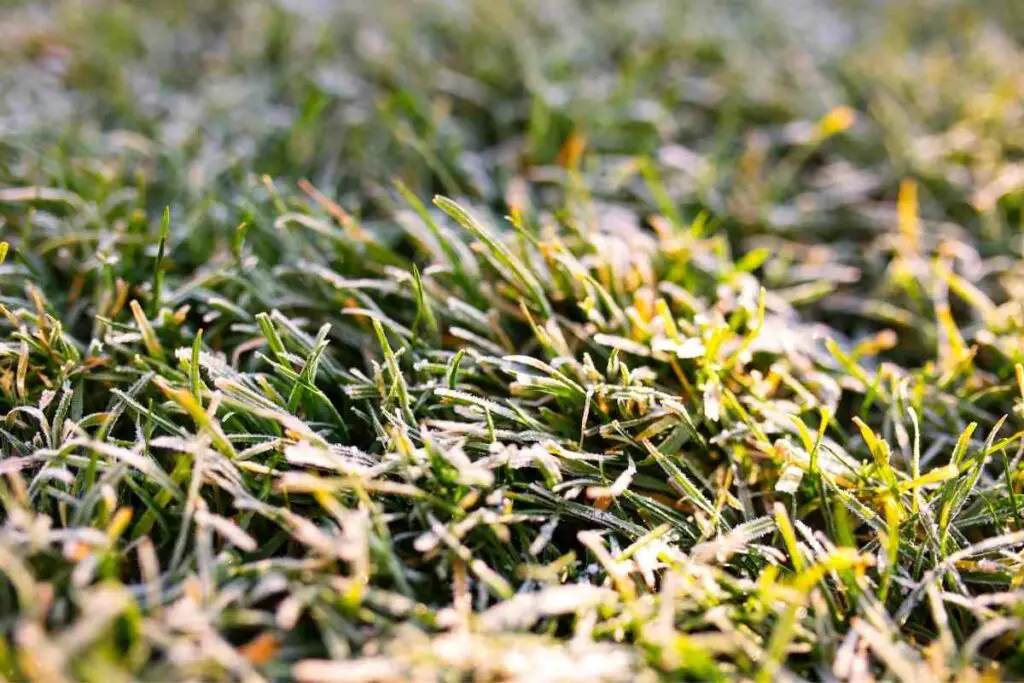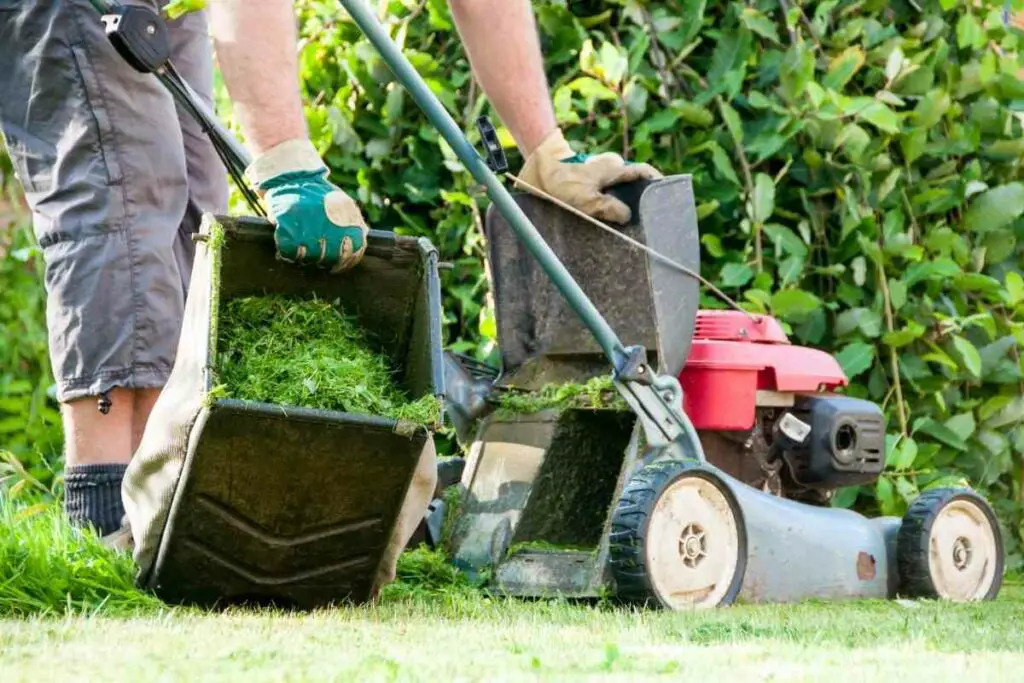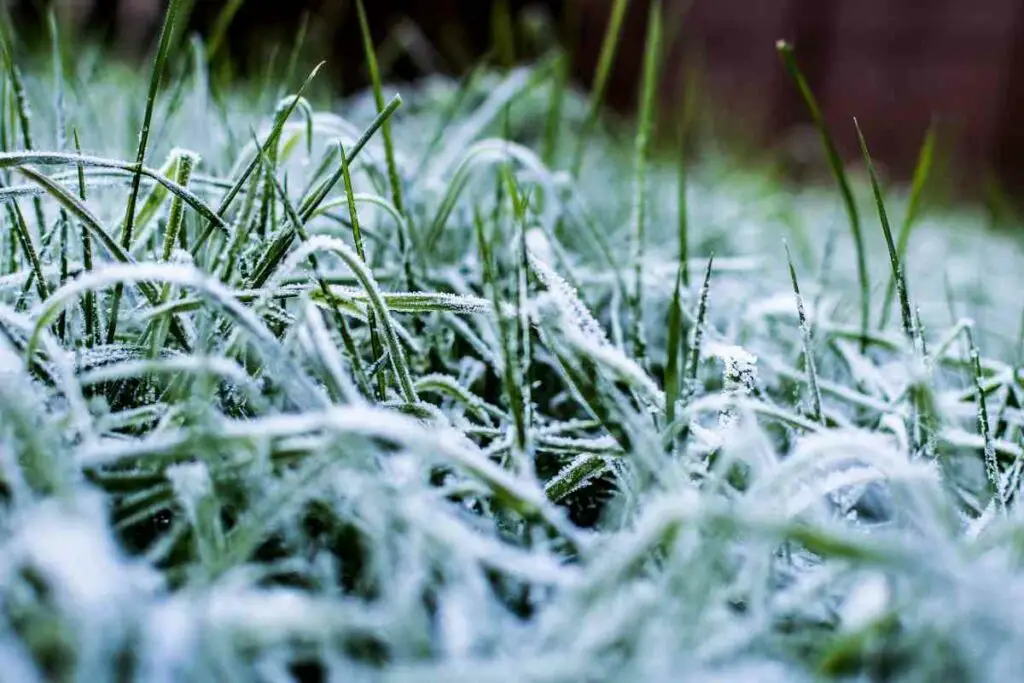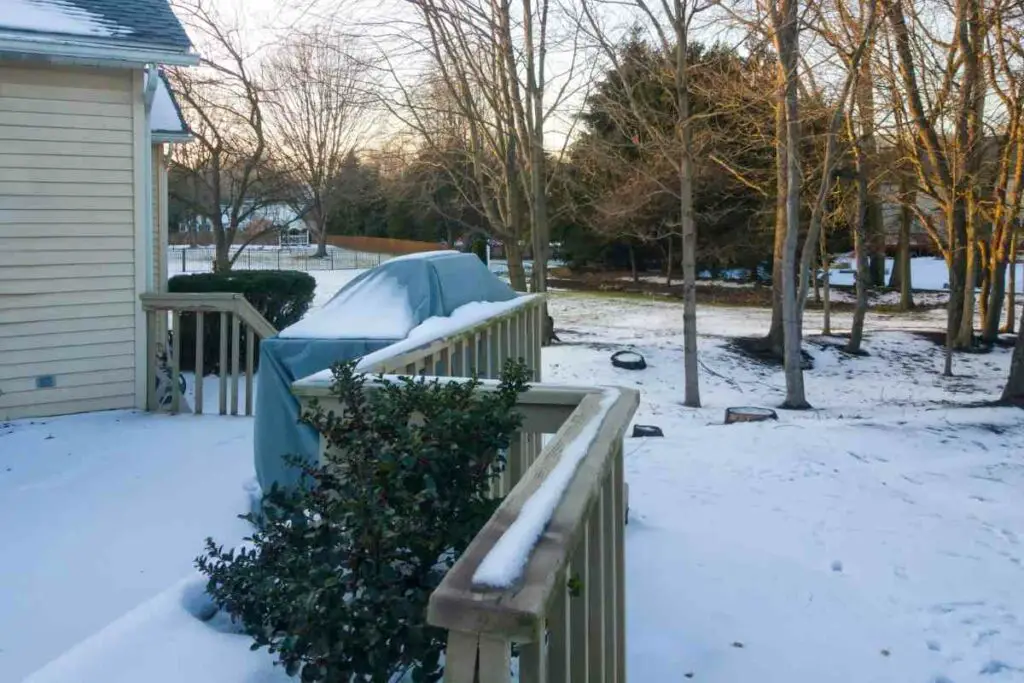During fall and summer, long grass looks messy and requires frequent mowing.
However, cutting the grass too short during winter may stress the plant, which may end up damaging your lawn.

Observing the proper height ensures your grass does not go into hibernation quickly.
Early dormancy may stress the roots and lead to the premature death of some of your grass. For most varieties, mowing at 2.5 inches is ideal during the winter.
Table of Contents
How Short To Cut Grass Before Winter
The height of the grass should not be too short or too long.
Although the mowing height is determined mainly by the grass variety, ensure you maintain the one-third-cutting rule.
During the final fall mow, ensure your grass is at least a third of the blade.

Cutting more than a third of the blade will stress the grass and may cause severe damage during the winter.
It will be difficult for the grass to revive from dormancy if it gets damaged during the cold winter.
In Particular – Cool-season grasses should be mowed at a height of approximately 2.5 inches before winter. On the other hand, warm-season grasses such as Bermuda should be cut at 1.5 inches.
If your region has a snowy winter, mow your lawn at 2.5 inches when the outside temperatures dip to about 50 degrees F.
Below these temperatures, cool-season grasses stop growing and enter a state of hibernation. Therefore, the best time to mow your lawn should be late October.
On the other hand, warm-season varieties are affected when the temperature dips below 60 degrees F.
You should mow your lawn when the grass growth rate reduces, typically between early October and November.
The specific time for mowing will depend highly on the region’s temperatures.
| Cool-Season Grasses | Warm-season Grasses |
|---|---|
| Kentucky Bluegrass | Bermuda Grass |
| Fescue Grass | Zoysia Grass |
| Rye Grass | Centipede Grass |
| Bent grass | Buffalo Grass |
| St. Augustine Grass |
Kentucky bluegrass, Fescue, Rye, and Bent grass survive well with longer blades.
Cutting the grass at 2.5 inches ensures the plants continue photosynthesizing and storing enough energy for the winter.
Conversely, warm grasses have more unique needs since they come in several varieties.
Bermuda, Zoysia, and Centipede grass varieties should be mowed at 1.5 inches.
Buffalo and St. Augustine grasses survive the winter well when cut at the height of 2.5 inches before the winter sets.
Heads Up! If the grass is too tall, mow it in stages until it is not more than 2.5 inches. If the optimal height violates the one-third rule, set the mower blade height above the usual before cutting your grass. You can trim the grass after a few days to ensure you achieve the ideal size.
Should You Mow Your Lawn During The Winter?
You should not trim your lawn during the winter.
Even if the grass seems messy, refrain from your urges to mow. Frosted or frozen grass should not be cut since it can damage and even kill the roots.

In fact, you should not walk on your frozen lawn. Any disturbance leads to damage to your yard.
Even when there is sunlight and your grass is not frozen, avoid mowing it.
Cutting dormant grass blades creates a wound that may not heal during the winter. Also, diseases may attack the grass plant during the healing process.
When To Mow Your Lawn
You should mow your lawn when temperatures start dropping during the late fall.
Trimming your yard during this period will ensure your grass is vibrant once spring comes. If you fail to mow, your lawn will be affected by either diseases or pests.
If the grass is left unattended, it may be infested by rodents, fungus, grass rot, and snow mold.
Also, your lawn will not have that lush and green appeal during spring. A proper lawn care routine throughout the year is vital for the health of your yard.
Best Lawn Practices For Winter

Apart from trimming your lawn before winter, several practices should be observed.
- Ensure your yard is well aerated. Properly aerated soils are well drained, and the grass will not struggle to absorb nutrients.
- Fertilize your grass before winter. You can use organic fertilizer or a slow-release inorganic fertilizer. The fertilizer should have a high potassium ratio to help the roots remain robust during the cold season.
- Remove excess leaves or broken grass from your lawn – they encourage rot and grass diseases.
Carrying out these procedures and mowing at the appropriate time will ensure good growth during the spring.
The grass will choke out the weeds since it has been adequately fed and will turn green much faster.
Final Thoughts
Mowing your grass before winter offers long-term benefits to your lawn.
Most notably, a clean lawn can withstand harsh winter conditions.
The mowing height depends on the type of grass, but it should range from about 1.5 inches to 2.5 inches.
Cutting too short or too long negatively impacts the grass’s growth. When the grass is long, its tendency to attract diseases is high.
Likewise, trimming too short stresses the grass plant as it struggles to use nutrients.
- How to Dry Basil Leaves: A Professional Guide
- Is an Avocado a Fruit or Vegetable? Simple Answer and Explanation
- Does Pineapple Have Seeds? Exploring the Anatomy of Pineapples
- Blooming Through Winter: Can I Grow Vegetables Indoors in the Winter?
- What Can You Grow in a Greenhouse All Year Round: A Guide to Year-Round Greenhouse Gardening
- Are Blueberries Blue? Debunking the Myth of Their Color
















